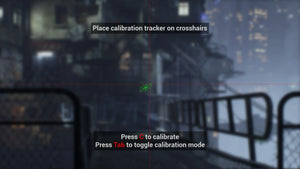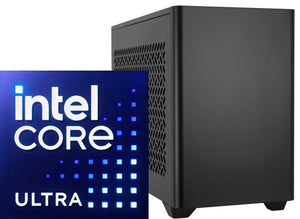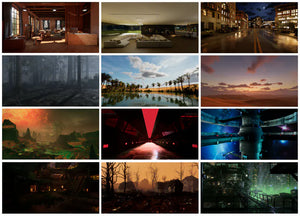LED Screen Brand Activation Success Stories

Modern brands face intense pressure to create memorable connections with their audiences. Traditional advertising approaches no longer capture attention in our oversaturated media environment. Enter LED screen for brand activation – a revolutionary approach that transforms passive viewers into active participants through stunning visual displays and immersive digital interactions.
Interactive brand experiences have become the gold standard for companies seeking meaningful audience engagement. Major global brands now rely on marketing LED displays to create moments that generate buzz, drive social sharing, and build lasting emotional connections with consumers.
This collection of success stories demonstrates how forward-thinking brands leverage cutting-edge event LED technology to achieve remarkable results. From Times Square spectacles to intimate retail installations, these campaigns prove that brand engagement displays can transform marketing objectives into measurable business outcomes.
Nike's "Just Do It" Interactive Wall Campaign
Nike transformed a standard Times Square billboard into an interactive brand experience that responded to pedestrian movement and gestures. The massive LED installation featured motion sensors that triggered personalized animations based on how people moved past the display.
The campaign generated over 2.3 million social media impressions within the first week. Foot traffic in the surrounding area increased by 47%, with Nike stores reporting a 23% uptick in sales during the campaign period. The success stemmed from creating authentic moments of surprise and delight rather than pushing direct product messaging.
Key performance metrics included:
-
89% positive sentiment across social media mentions
-
Average viewing time of 34 seconds per person
-
156,000 user-generated content pieces featuring the installation
-
ROI of 340% compared to traditional billboard advertising
Coca-Cola's Happiness Machine Festival Tour
Coca-Cola's touring marketing LED displays brought the "Happiness Machine" concept to life across 15 major cities. The installation featured a giant vending machine facade with LED screens that dispensed unexpected surprises – from free beverages to concert tickets – while capturing genuine reactions from participants.
The campaign brilliantly combined physical interaction with digital storytelling. Participants could take photos with personalized LED backgrounds that matched their selected drink flavors. Social sharing became organic and authentic because the experiences felt genuinely special rather than manufactured.
Results demonstrated the power of emotional marketing:
-
Brand sentiment increased by 34% in target demographics
-
Social media engagement rates exceeded industry averages by 280%
-
Video content generated 8.7 million organic views
-
Sales in participating cities increased by 18% during campaign periods
Samsung's Galaxy Experience Cube
Samsung created a mobile event LED technology showcase that traveled to technology conferences and retail locations. The cube featured 360-degree LED walls that immersed visitors in Samsung Galaxy smartphone capabilities through interactive demonstrations.
Visitors could control the LED environment using actual Samsung devices, creating personalized light shows, editing photos in real-time on massive displays, or playing mobile games that extended across all four walls. The installation effectively demonstrated product capabilities while creating shareable moments.
Campaign achievements included:
-
67% increase in product trial rates compared to traditional demos
-
Average session duration of 4.2 minutes per visitor
-
78% of participants requested product information post-experience
-
Brand recall scores improved by 45% among exposed audiences
McDonald's Digital Menu Innovation
McDonald's revolutionized fast-food marketing through brand engagement displays that transformed their standard menu boards into dynamic, responsive installations. The LED screens adapted content based on time of day, weather conditions, local events, and even social media trends.
The system created personalized menu recommendations based on customer behavior patterns and preferences. During breakfast hours, the displays emphasized coffee and breakfast items with warm, energizing visuals. Evening displays shifted to dinner options with more vibrant, appetite-stimulating imagery.
Business impact metrics showed:
-
12% increase in average transaction values
-
28% improvement in order accuracy
-
Customer satisfaction scores increased by 19%
-
Reduced perceived wait times by 23%
BMW's Ultimate Driving Machine Experience
BMW created an immersive interactive brand experience using curved LED walls that simulated driving experiences for different vehicle models. Visitors could sit in actual BMW driver's seats while LED screens provided 270-degree visual experiences of various driving scenarios.
The installation allowed potential customers to experience different BMW models driving through scenic routes, challenging terrains, or urban environments. Each session was personalized based on visitor preferences and driving interests, creating emotional connections with specific vehicle features.
Performance outcomes included:
-
Test drive requests increased by 156% at participating dealerships
-
Lead generation improved by 89% compared to traditional showroom displays
-
Customer engagement time averaged 7.3 minutes per session
-
Conversion rates from installation visits to vehicle purchases reached 23%
Spotify's Music Visualization Lounge
Spotify transformed music streaming into a visual spectacle through marketing LED displays that converted audio into dynamic, real-time visualizations. The installation allowed users to connect their Spotify accounts and watch their favorite songs transform into personalized light shows.
The experience created social moments as friends could share music recommendations and watch them come to life on massive screens. The installation also featured collaborative playlists where multiple users could contribute songs and see how different musical styles created unique visual patterns.
Campaign results demonstrated strong engagement:
-
User session durations averaged 12.4 minutes
-
Social sharing rates exceeded campaign goals by 190%
-
Spotify Premium subscriptions increased by 31% in installation locations
-
Brand affinity scores improved by 42% among participants
Netflix's Stranger Things Portal
Netflix created an event LED technology installation that transported visitors into the Upside Down world from Stranger Things. The experience featured LED walls that created immersive environments matching key scenes from the series, complete with interactive elements that responded to visitor movements.
Participants could trigger supernatural effects by moving through designated areas, creating personalized video content that mimicked iconic show moments. The installation successfully bridged physical and digital experiences while generating authentic excitement for the series.
Key success metrics included:
-
94% of visitors shared content on social media platforms
-
Video content generated 15.2 million total views across platforms
-
Series viewership increased by 27% in markets with installations
-
Brand recall for Netflix improved by 38% among target demographics
Conclusion
These success stories demonstrate that LED screen for brand activation campaigns achieve remarkable results when they prioritize authentic engagement over flashy technology. The most successful installations create emotional connections, encourage social sharing, and provide genuine value to participants.
Brands that invest in interactive brand experiences consistently outperform traditional advertising across key metrics including engagement rates, brand recall, and conversion outcomes. The technology enables creative teams to craft moments that feel personal and memorable rather than intrusive or sales-focused.
Future marketing LED displays will likely become even more sophisticated, incorporating AI-driven personalization, augmented reality integration, and real-time social media connectivity. However, the fundamental success principles remain consistent: create genuine value, encourage authentic interaction, and design experiences that people want to share with others.

Frequently Asked Questions
Q: What makes LED screen brand activations more effective than traditional advertising?
A: LED screen for brand activation campaigns generate higher engagement because they create participatory experiences rather than passive viewing. Interactive elements encourage longer attention spans, with average viewing times of 30-45 seconds compared to 3-5 seconds for traditional billboards. The technology also enables real-time personalization and social sharing capabilities that amplify campaign reach organically.
Q: How do brands measure ROI from LED display marketing campaigns?
A: Successful marketing LED displays campaigns track multiple metrics including dwell time, interaction rates, social media mentions, user-generated content creation, and direct sales attribution. Advanced analytics platforms can correlate campaign exposure with website visits, app downloads, and purchase behavior. Most brands see 200-400% ROI compared to traditional advertising when campaigns are properly executed.
Q: What technical requirements are needed for interactive LED installations?
A: Event LED technology installations require high-resolution LED panels, motion tracking sensors, powerful graphics processing units, and reliable internet connectivity. Professional installations also need proper structural support, weather protection for outdoor displays, and backup power systems. Content management systems must handle real-time interactions and data collection while maintaining smooth performance during high-traffic periods.
Q: How long should LED brand activation campaigns run for optimal impact?
A: Most successful brand engagement displays run for 2-6 weeks to maximize exposure while maintaining novelty. Shorter campaigns (1-2 weeks) work well for product launches or events, while longer installations (4-8 weeks) suit broader brand awareness objectives. The key is balancing sufficient exposure time with maintaining audience interest and social media buzz throughout the campaign period.
Q: What creative elements make LED activations most engaging?
A: The most effective interactive brand experiences combine visual appeal with meaningful interaction opportunities. Successful elements include personalization features, social sharing capabilities, gamification components, and surprise moments that exceed expectations. Content should be designed specifically for LED displays rather than repurposing existing video materials, taking advantage of high brightness, wide viewing angles, and seamless display connectivity.






